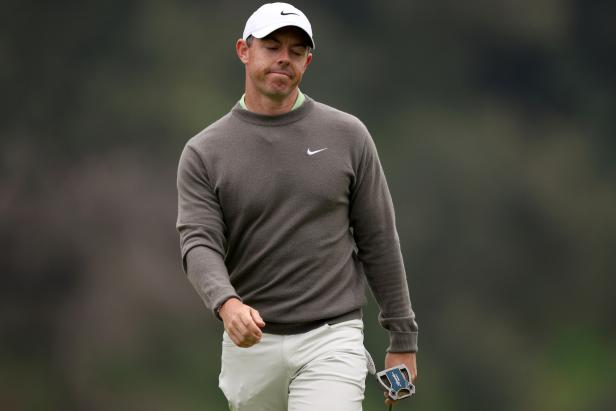Rory McIlroy shared his thoughts on the future of high-level professional golf at the Genesis Invitational this week, suggesting that it could look similar with a few tweaks. Despite some big names missing the weekend, the leaderboard is strong, with Patrick Cantlay, Xander Schauffele, and Will Zalatoris leading the way. McIlroy addressed the overreactions on social media about the lack of star power, stating that signature events like Riviera have worked well so far.
Although the current model is functioning, McIlroy believes that there is room for improvement. He sees the future of golf heading towards more signature events, both on a global scale and adding more tour stops in the southern hemisphere and far east. While he doesn’t anticipate significant changes to the current structure, he suggests that the front and back ends of the year may look different with some adjustments.
One potential tweak suggested by McIlroy is to increase the number of players in tournaments to 80, creating one tour for the top players in the world with feeder tours for others. He referenced the Champions League in European football as a model for how this could work, with the best players competing against each other at the highest level. McIlroy did not mention the impact of LIV Golf and how it would fit into this new vision, recognizing that aligning everyone’s interests in the game is a challenge due to the current fractured landscape.
The future of professional golf, according to McIlroy, may involve a more global approach, incorporating countries from around the world into the tour schedule to create a more diverse and inclusive experience for players and fans. While certain events like Riviera, Memorial, and Bay Hill are meaningful and historical, there is potential for growth and expansion to create a more dynamic and competitive tour structure. McIlroy’s vision includes a balance of traditional events and new opportunities for players to showcase their skills on a grand stage.
Overall, McIlroy is optimistic about the direction of professional golf, acknowledging the need for some adjustments to keep the sport relevant and engaging for fans and players alike. While the challenges of aligning interests and navigating a changing landscape remain, McIlroy’s vision for the future of golf is one of continued growth and innovation to ensure that the sport remains at the forefront of the sports world. As the game evolves, so too must the strategies and structures that govern it, and McIlroy’s insights offer a valuable perspective on what the future may hold for high-level professional golf.


